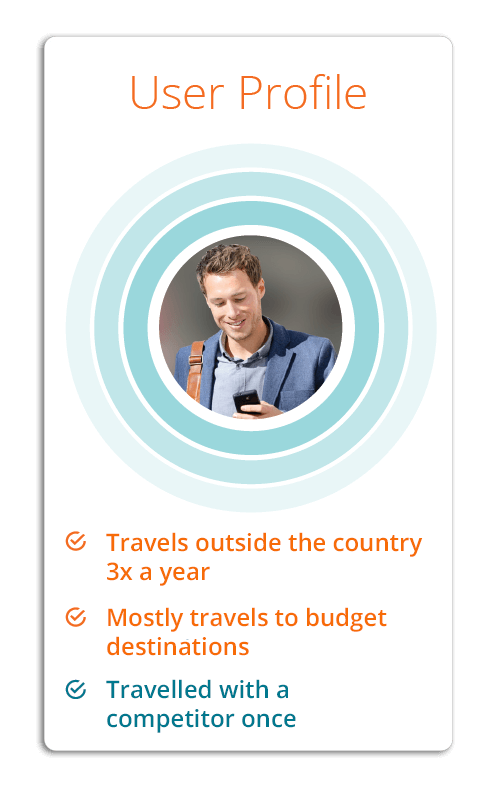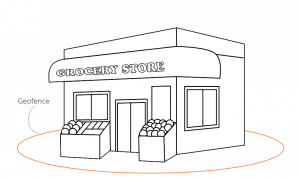- What is location-based marketing, and why use it?
- How are other apps like yours using it?
- How does it work?
1. What is location-based marketing & why use it?
Put simply, location-based marketing refers to the process of using devices to target users, based on where they are, or a place they have previously visited. This can encompass various sizes of location, such as a city, a store or a certain aisle in a store. Sometimes it’s also referred to as geo-marketing or proximity marketing. These terms have slightly different meanings but are often used interchangeably.

Why use it? On average, interacting with users based on location leads to double the mobile engagement of regular mobile marketing messages.
Why does it bring such results? The principal benefit of targeting users based on location is the added relevancy of mobile messages – they are more adapted to users’ context and therefore more useful to them.
How many companies are using it? According to Google, 61% of smartphone users are more likely to buy from mobile
sites and apps that customize information to their location. Location is an increasingly critical element of digital marketing for brands and enterprises.
Is it right for your business? Usually, it is thought to only be useful to brick-and-mortar type of businesses. That is not the case. Since it relies on mobile devices, it is useful to all mobile-first businesses (a.k.a mobile apps) and app-owning businesses.
What if you don’t have an app? Without an app, it can be more challenging, but not impossible. It would require connecting with a business that does have an app with location targeting installed, such as a voucher/coupon app. Most likely, it would be more of a “one-time” thing than an integrated part of your business strategy.
2. How are other apps like yours using location-based marketing?
Contrary to popular belief, sending notifications when a user is at a certain place is not what location-based marketing is all about; it’s just the tip of the iceberg. Here are some other cool ways to use it:
- Sending location-based notifications (did we mention it already?)
- Collecting location data
- Building location-based user profiles
- Location-based re-targeting
Let’s go over them one at a time.
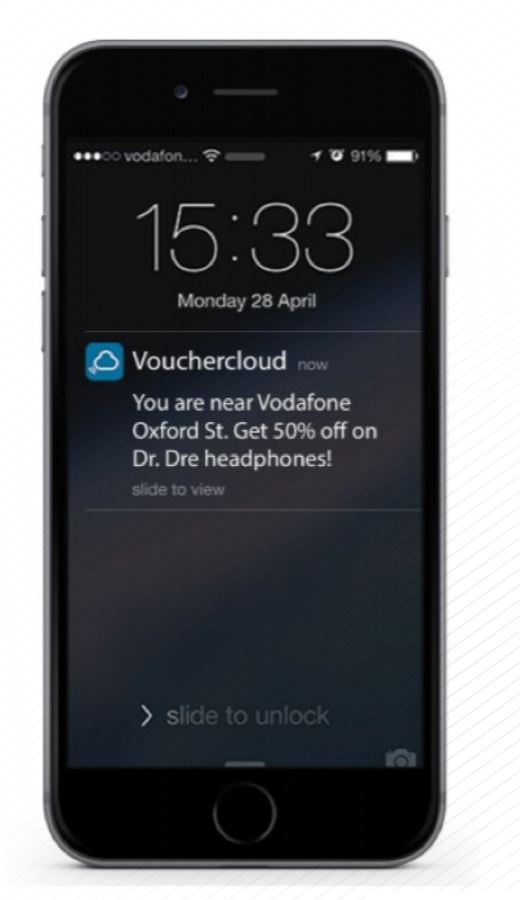
Location-Based Notifications
Location-based notifications are the most known and popular way to use location-based marketing. This involves sending notifications to app users when they enter, leave or stay in a certain area.
For publishers, this could mean triggering notifications in a controlled way, navigating users within a specific area towards nearby deals and discounts resulting in increased foot-traffic to their merchants. With the ability to create targeting logic to send messages or stay silent when users are ‘at home’ or ‘at work’, for example, this can create an even more powerful driver for point of sale transactions too. Location-based notifications balance better user experience with greater engagement and conversion rates.
Why use them? The goal of location-based notifications is always to attract user’s attention, encourage him to visit the app and hopefully get him to complete a certain conversion action, for example, redeem a coupon, rate a product or make a purchase.
Location-Based Data
One of the most under-used and under-valued tools in location-based marketing is the ability to collect and apply data about app users’ real world behaviors in a range of ways, such as foot traffic to certain locations, amount of time spent at a train station, etc. It is often referred to as location intelligence or location statistics/metrics.
Examples? There are a lot of interesting use cases for location data:
- Providing your advertisers with insights on the optimum time to show their content – and then going ahead and showing it – means the ability to determine where they’re most likely to engage with your app and their offering – to click, and to convert. Heat mapping allows you to do just this: track and better understand the movement and concentration of your audience, to pinpoint the best time to reach them
- Then, you can calculate the effectiveness of in-app or email promotions, by measuring foot traffic changes to a certain area on behalf of your advertisers, as well as measuring how much time users spent there (to see if they were just passing by or if they stayed there for a while and likely purchased something). This not only provides insights for you to make your campaigns more effective – but delivers new real estate and revenue streams to your product set and merchant offering.
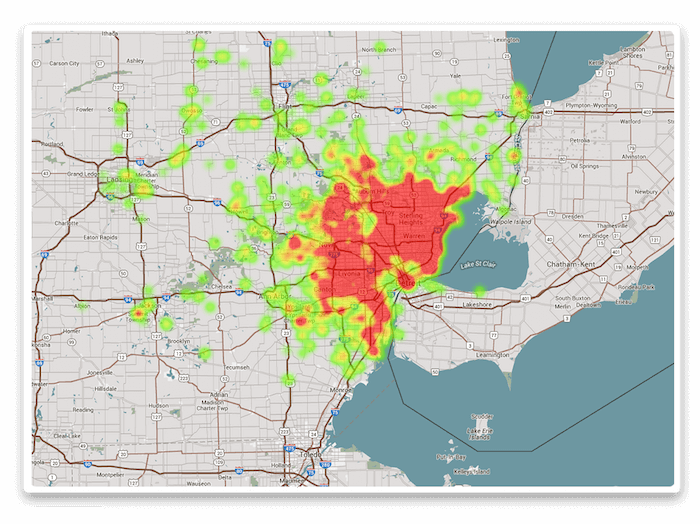
Why use it? The main benefit of location data is that it gives a better understanding of user’s whereabouts in the real world and it can, for example, show the direct impact of in-app and other marketing communications on app user’s physical behavior. App owners usually use this data to attribute offline conversions to their online efforts – to deliver and generate greater value from their user base and targeting efforts.
Location Based User Profiles
Location-based user profiles also make use of location data but in a slightly different way. Instead of counting visits to a certain location, they look at the type of place a user visits.
Examples? The most popular applications of location-based user profiles are:
- Understanding the vacation preferences of a booking app user, by measuring how often he leaves the country, if he travels to premium or budget destinations, or if he travels with a competitor
- Understanding the lifestyle preferences of a ticketing app user, by analyzing if he is often out in town on a Friday or Saturday night, or if he is mostly out during the day
Why use them? The main benefit of location profiles is enhanced personalization. They can be paired with data about user preferences to target them with very personalized messages. This is a way to improve user retention and loyalty that a lot of mobile apps are struggling with.
Location Based Retargeting
Location based retargeting also uses location data such as store visits to retarget users across other marketing channels – in-app, emails, banners etc.
Examples? Here are some of the ways to use location based retargeting:
- Showing a high-end car advertising via multiple channels to a user who has recently visited five BMW, Mercedes or Mazda dealerships
- Showing a mortgage advertising via multiple channels to a user who has recently visited 2 to 5 different banks
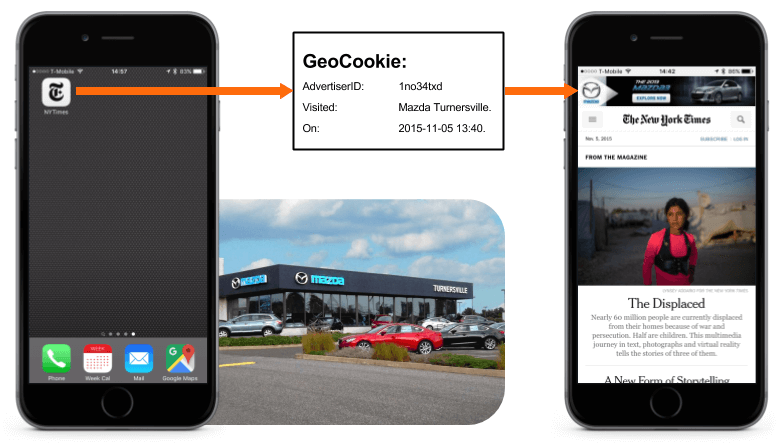
Why use it? The advantage of location based retargeting is that it’s more precise and therefore adds more relevance to any marketing channel. Going back to the car dealership example, would a single location based ad convert to a car sale? Mostly likely not, but it would make marketing messages more relevant and more likely to contribute towards a sale down the road.
3. How does it work?
Depending on the provider, location based marketing relies on either geotargeting, geofencing and/or beacons. How are they different? They mostly differ in the way they generate location data.
Geotargeting
Geotargeting traditionally uses IP addresses to figure out where users are. It’s generally used to send out messages to all users in a specific area instantly (with a press of a button so to say). It is widely used in web-marketing, where you don’t need to get very precise. However, when it comes to mobile marketing, it’s mostly useful for things like breaking news and want to inform a bunch of users at once in an area as big as a city. But since geotargeting is not real-time, you can’t use it to collect info about users’ whereabouts, foot traffic, dwell or send real-time notifications.
Geofencing
Geofencing uses triangulation of location services (cellular, WIFI towers etc.) to detect where users are in real-time. A geofence is a virtual fence around a real world location. Geofencing is the process of placing and using geofences to target app users as they enter, leave or stay within that area. It’s more useful for large range outdoors targeting. This usually means between 50-10,000m, for example on a scale of a shopping mall, or a neighbourhood. It doesn’t require hardware and usually comes in the form of a software that can be integrated into an app as well as with an online dashboard that is used for campaign management.
Beacons
Beacons rely on Bluetooth technology. A beacon is a Bluetooth signal transmitter that can be placed inside/at a real world location. Thanks to Bluetooth, Beacons can detect an app user that can then be targeted accordingly. Beacons are more useful for small range, highly granular targeting, usually between 1-50m, for example in an aisle of a store or in front of a check-in gate. Hardware (physical beacons) and its installation are required. Beacons also usually come with a software program and an online dashboard.
We hope these tips helped you understand what is location based marketing and what are its common use cases. If you decide to give it a try, here is a list with the must-have features for a location based marketing provider.
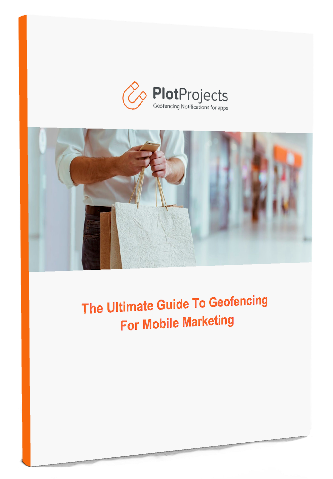 |
Want to know more about geofencing?Download the Ultimate Guide to Geofencing for Mobile Marketing to find out more about geofencing and beacons and why to use them in your app. |

